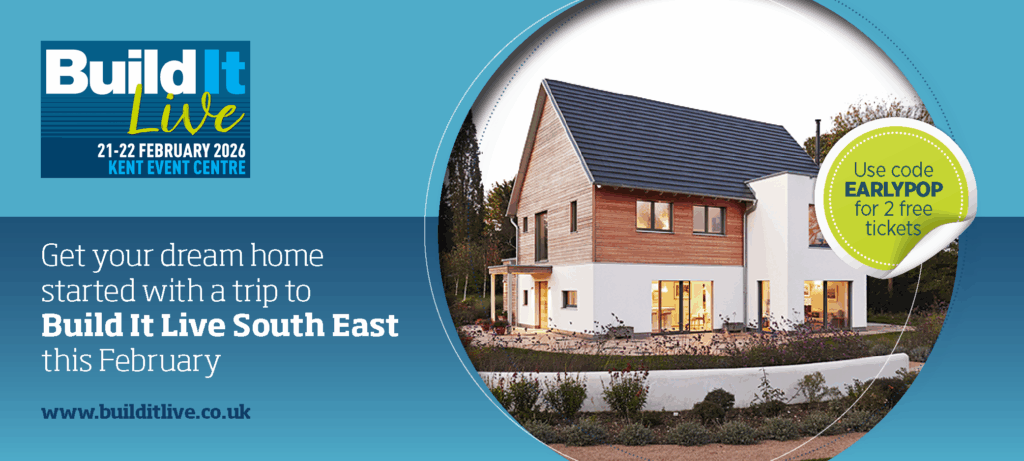
21st-22nd February 2026 - time to get your dream home started!
BOOK HERE
21st-22nd February 2026 - time to get your dream home started!
BOOK HEREAre you thinking about building a swimming pool as part of your self build or home renovation project? For many of us, lounging beside a swimming pool on a warm day is a luxury reserved for summer holidays abroad rather than at home in your own garden. However, creating your own pool doesn’t require a millionaire’s budget.
In fact, with growing interest in indoor-outdoor living, reports from SPATA (the Swimming Pool and Allied Trades Association) show demand for residential pools is rising every year. From compact plunge pools to sleek in-ground installations, there are options to suit a wide range of budgets and garden plots. Key considerations include the swimming pool’s purpose, location, design and how much of the project you’re willing to tackle yourself.
Material choices, heating options and ongoing maintenance will also affect both initial costs and long-term running expenses. Whether you’re planning a DIY liner pool or a professionally built concrete design, understanding the full picture – from planning permission to upkeep – is essential for a successful swimming pool that will enhance your lifestyle year-round.
There are various different types of outdoor swimming pool – here are the main options:
At the lower end of the price spectrum, above-ground pools are fairly straightforward to piece together – and as they’re not dug into the soil, they’re simple to remove, too. However, the elevated position might not appeal to those wanting a more natural aesthetic in their garden. You can buy and install an above-ground swimming pool for less than £10,000, but expect to pay around £15,000 for a high-end model. Most are prefabricated kits are constructed using steel, resin or wood frames with a vinyl liner.
Building in-ground will need suitable waterproofing; the extra weight of the pool once filled will need to be factored into the design as well. There are three main construction choices: a hard finish with a waterproof reinforced concrete shell; a PVC liner; and a fibre glass/ceramic moulded shell, craned or carefully manoeuvred into place.
“If you’re seeking a no-frills solution, opt for a liner pool – these are less expensive than concrete designs and the one piece makeup won’t need to be waterproofed or tiled,” says Jamie Smith from London Swimming Pool Company. The average cost of a liner pool is between £25,000-£50,000. “DIY-ers looking for something basic should consider a one-piece fibre glass model. Don’t forget the key add-ons, such as excavation, plant and equipment.”
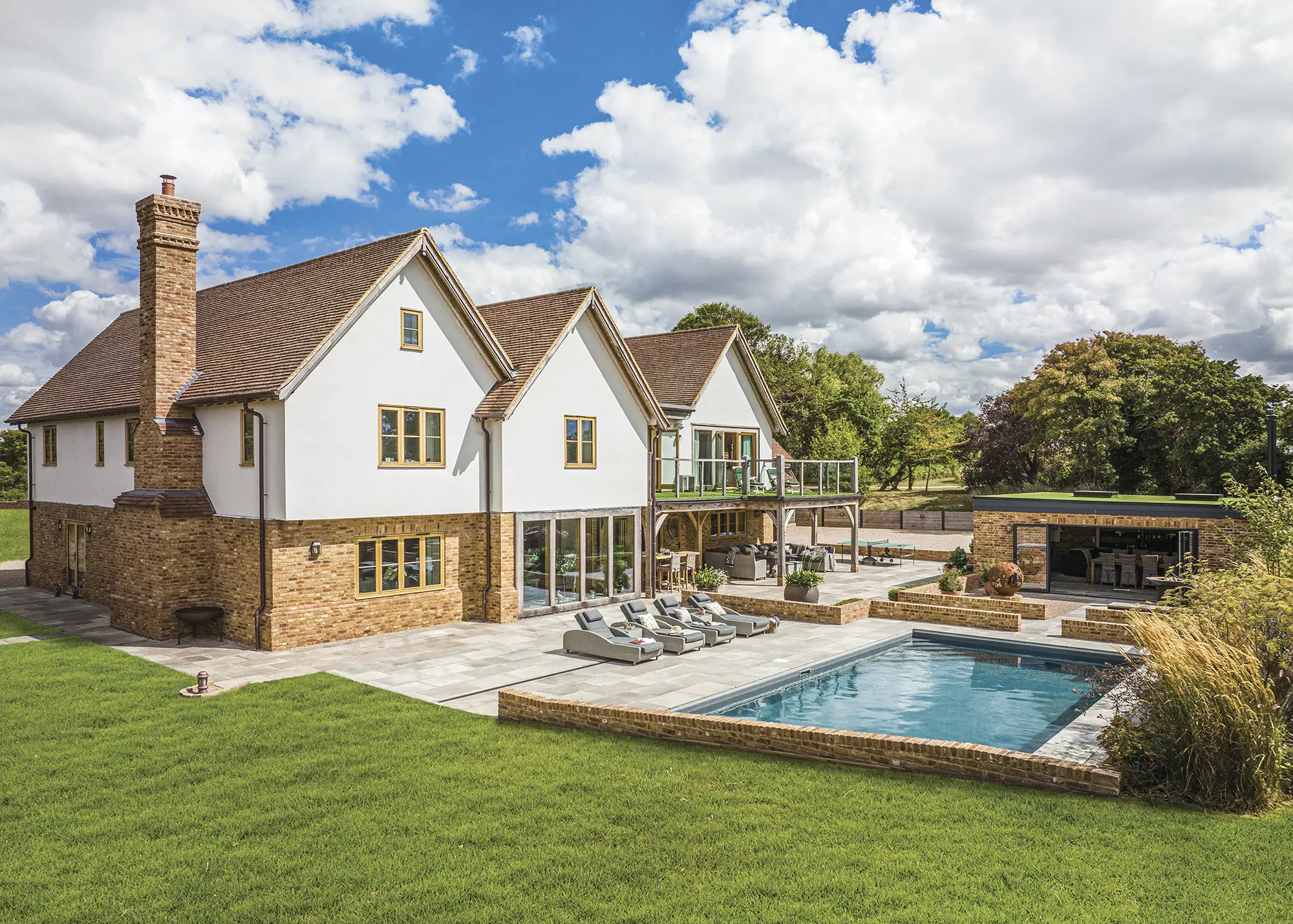
A collaboration between architectural designer Pete Tonks and oak frame home specialist, Oakwrights, this fantastic manor house sits beautifully on the Essex/Cambridgeshire border. The patio backs onto an in-ground swimming pool. Photo: Mark Watts
Concrete pools are a popular choice, with tiles (often in blue) being the most common finish. Whether you choose ceramic, porcelain, glass or stone, the units come in different sizes and colours to create a whole variety of patterns and aesthetics. “They are hard wearing and, with correct installation and maintenance, shouldn’t need to be replaced,” says Jamie. Budget in the region of £60,000 for a basic concrete swimming pool – larger projects can cost £120,000+. Pre-manufactured pools are created in a factory, arriving in one piece ready to be installed; these solid structures tend to be more expensive than those assembled on-site.
Another one-unit solution that’s perfect for more compact gardens are swim spas. These look and work a bit like a hot tub, but their jets are positioned to enable you to swim continuously against the current, rather than in laps, as you would in a larger pool.
With the UK weather seeming increasingly unpredictable, having a sheltered pool will allow you to swim regardless of what it’s like outside – great for regular fitness.
Unless you’re lucky enough to have a suitable room, you’ll need to factor in the cost of adding a new building, such as a garden room, whether attached or separate to the main house. Oak frame structures are a popular choice, infilled with lots of floor-to-ceiling glazing to offer a natural ambience and the illusion of being outside. Another favoured position for pools is in the basement. Often seen in high-end renovations, these offer the ultimate personal sanctuary. Indoor swimming pools will cost more than an outdoor pool – expect to pay in the region of £100,000-£250,000 for a project.
In terms of materials, the options are largely similar to those used outside. However, if you’re installing above a basement level, then a stainless steel pool might be a superior choice as it’s lighter than concrete.
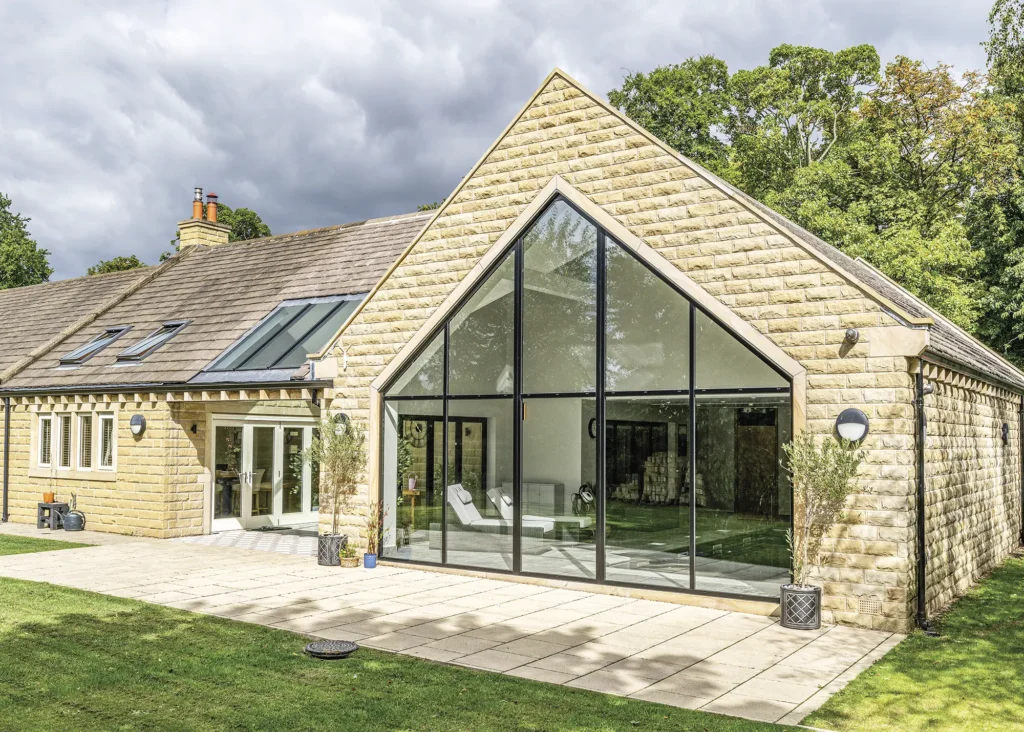
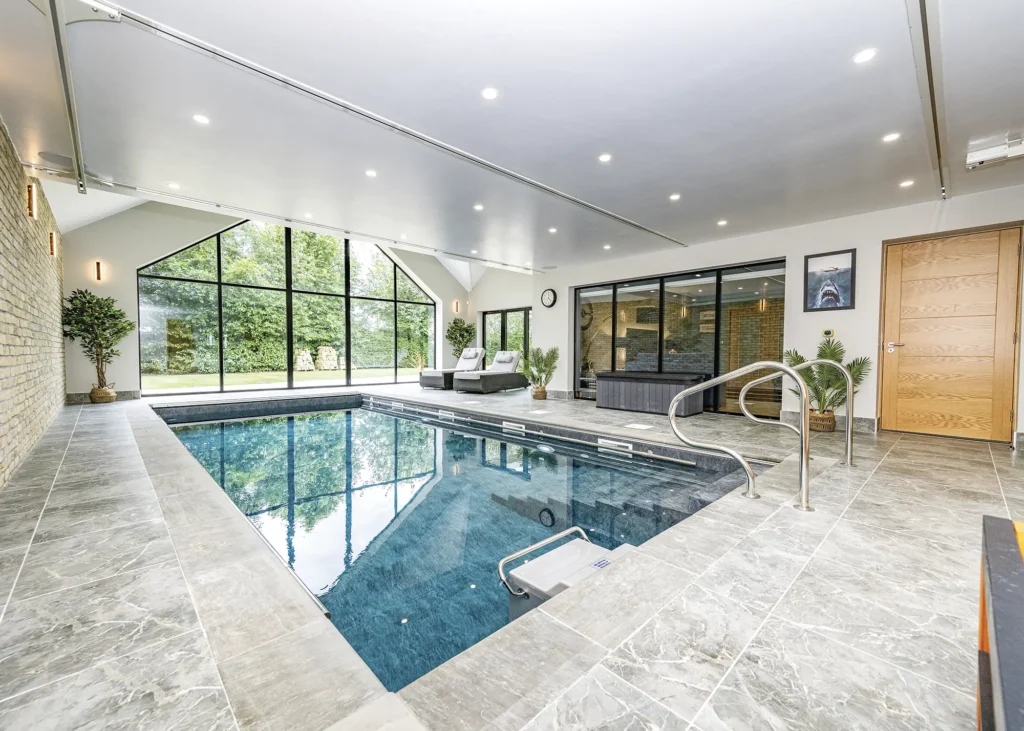
If having a separate structure isn’t an option for you, consider installing a sliding glazed dome over an outside pool to provide shelter while you’re swimming. You can get designs that are tall enough for you to stand at the side of the pool under the cover, as well as versions that glide open so that you can expose as much of the water to the elements as you want on any particular day. Having all that moisture in a confined space requires special attention to dehumidification and ventilation, so it’s worth engaging the skills of a specialist to work out what your project will require.
Look for professionals that are linked to SPATA to guarantee they work to the association’s standards. “The estimated daily energy and chemical cost of running an indoor domestic pool is about £7.50, compared with about £5 per day for an outdoor one,” says Sallie Leslie-Golding from SPATA.
If you’re keen on something a bit more at one with nature, then this is the solution for you. Natural swimming ponds are made by integrating plants with an organic filtration and drainage system into what is effectively a living ecosystem. It encourages wildlife to thrive and creates a pool that blends harmoniously with the garden.
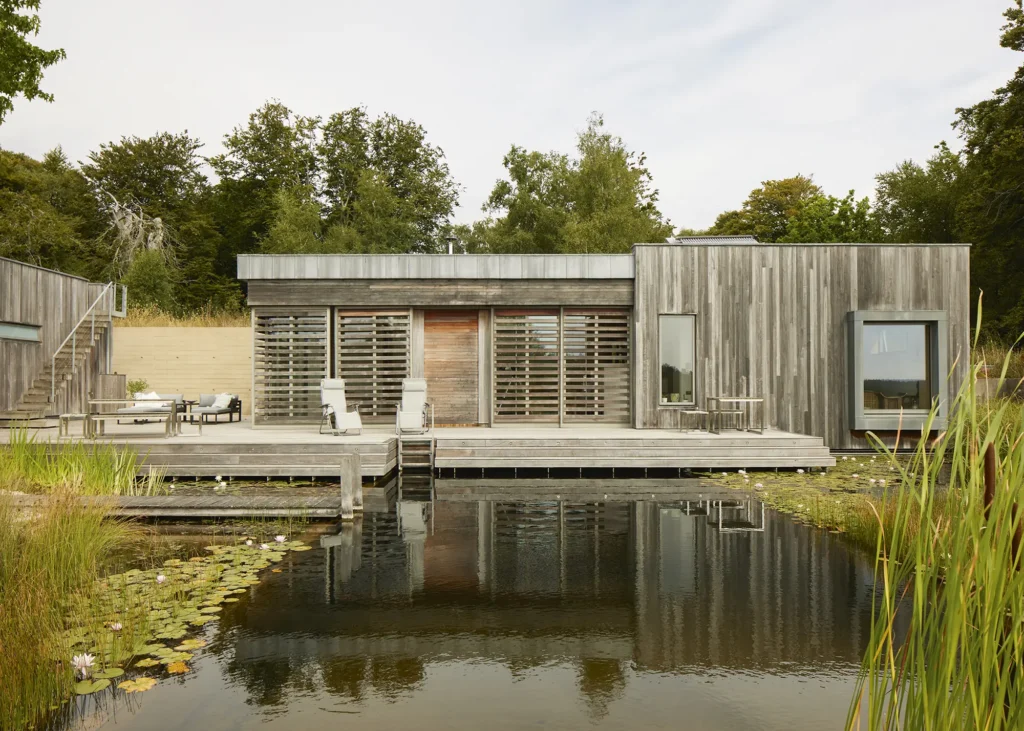
Nestled into an 18-acre plot in the New Forest, PAD Studio masterminded a sustainable, low-energy eco home that calls back to its surroundings in both form and function. The timber-clad scheme comprises a simple rectangular shape with wide glazed doors that seamlessly connect the interior with a deck and natural swimming pool. Photo: Richard Chivers
The pond will have a solid base to allow for easy removal of debris, but there won’t be a need for the chemicals used in conventional pools as the careful design works to create an environment for naturally purified water.
The swimming zone is generally kept separate from the plants, so you won’t need to worry about catching your feet on any aquatic foliage. Note that, because of the carefully balanced ecosystem, the water isn’t suitable for fish.
Expect maintenance to be much lower than with conventional pools – simply cut back plants as you would other specimens in the garden and remove surface debris regularly with a skimmer.
The floor of the pond will need to be vacuumed several times a year. It’s not recommended to heat natural pools, so you’ll save on this element of the installation, but they may not be a year-round option. According the The Swimming Pond Company, costs start at around £100,000 for an 80m² design and the price per m² decreases as the size increases.
Which pool shape is right for you?“The British market has traditionally favoured fitting rectangular swimming pools, and these are often still preferred by homeowners,” says Sallie Leslie-Golding from SPATA. “However, over the years, new trends in construction and remodelling have made designs more original, unique and customised.” Think bespoke shapes, unusual materials and the ultimate in luxury. If you’re lucky enough to have an elevated garden that overlooks a particularly impressive view, consider an infinity pool for optimum wow factor. |
The main solutions for heating swimming pools are conventional boilers and heat pumps. “I recommend an air source heat pump for outdoor pools and a conventional boiler for indoors,” says Daniel Phillips from Lighthouse Pools. Bear in mind that the construction material used for the pool shell could impact the heat pump’s efficiency.
A cover will help to keep the water free from leaves and insects, as well as contribute towards conserving heat. “Whether indoors or outdoors, a pool cover will minimise running and maintenance costs,” says Jamie. “When the pool is not being used for any lengthy period – day and night – the protection will reduce water evaporation by up to 95%, preventing unnecessary spend on heating and chemicals. For outside pools, reducing sunlight exposure will also minimise algae growth, which can be a health hazard and create slippery surfaces.”
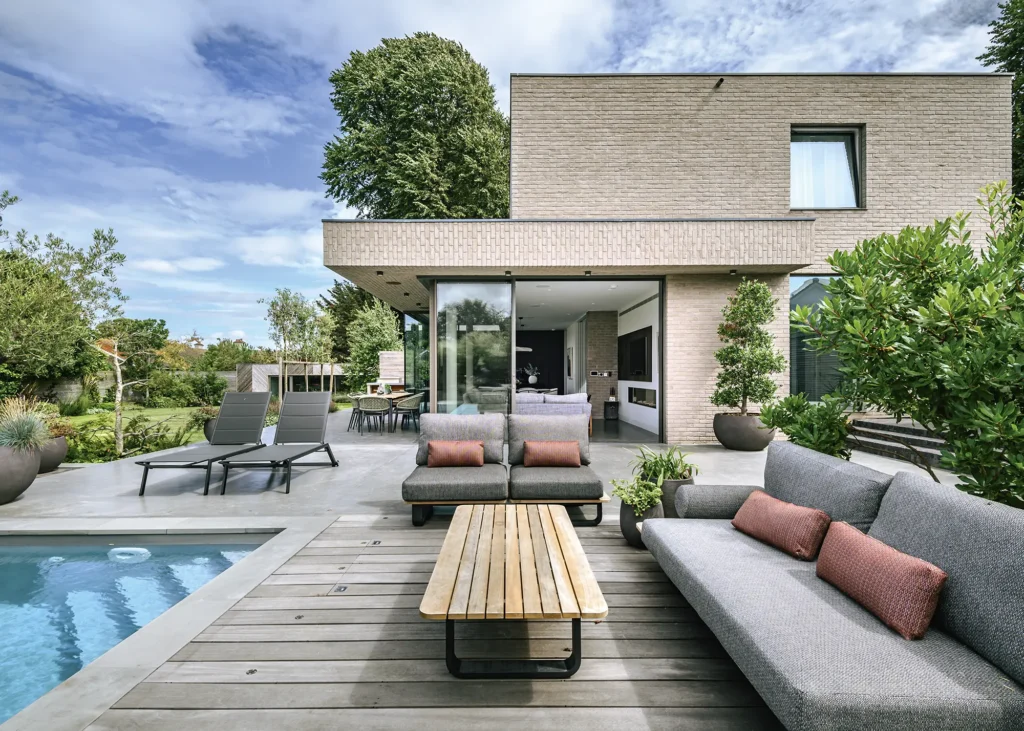
Sliding patio doors and sleek flooring connect Lucas Pulak and Agnieszka Zala‘s home in South East London with its garden, where a swimming pool, hot tub, sauna and gym all contribute to that luxury feel. Photo: Trade Photographer
Some of these protectors are specially designed to hold the weight of someone stepping on them – particularly important for the safety of children and pets. Another option that will help here is to build a fence around the pool, perhaps fitted with locks and alarms. For the ultimate high-end luxury, a moveable floor will give a pool room dual purpose – perfect for hosting events and parties.
In terms of keeping the water clean, chlorine is the most well-known solution, but there are alternatives. “Ionisation, ultra violet and active oxygen treatments are becoming increasingly popular to assist and complement chlorine,” says Jamie. It’s advisable to have the setup serviced regularly – Jamie recommends biweekly inspections by a professional pool engineer to ensure peak performance.
In most cases, you don’t need planning permission for an outdoor swimming pool in your garden, as long as it doesn’t cover more than 50% of your property’s curtilage. However, if your home is listed, in a conservation area or has specific planning constraints, you should consult your local planning authority. For indoor pools or structures like enclosures and pool houses, planning permission and Building Regulations may apply, particularly if it’s a large structure.
Build times vary depending on the complexity of your swimming pool project and the construction type. A simple, above-ground pool may be installed within a couple of weeks. In contrast, however, a concrete in-ground pool – especially one with luxury features – can take eight to 12 weeks or longer. Factors such as weather conditions, ground type, planning permissions, and contractor availability can affect timelines. If the pool is part of a larger landscaping or indoor building project, you should add on more time to account for excavation, infrastructure setup and the final finishes.
Many homeowners choose to build their own pools using DIY kits, particularly for liner-based or above-ground options. These kits often include instructions, but you’ll need some level of practical skill and possibly assistance for tasks like excavation, plumbing and electrical work. Professional help is usually advisable for more complex builds, and for in-ground concrete pools, most people hire experienced contractors. Even with DIY projects, it’s wise to consult specialists for critical stages like water treatment and structural safety.
You can use a swimming pool all year round in the UK, as long as you have the right setup. To maintain a comfortable temperature during colder months, you’ll need efficient heating – most commonly via a heat pump, gas boiler or electric system. Insulated pool covers and enclosures help retain heat and protect against weather. Indoor pools will be easier to use year-round, while outdoor pools require more energy to keep at a comfortable temperature. Keep in mind that running costs increase with year-round use, so energy efficiency becomes especially important.
Common heating options in the UK include electric heaters, gas boilers, oil systems, solar panels and heat pumps. Heat pumps are particularly popular due to their energy efficiency and lower long-term running costs, though they come with a higher upfront cost. Solar heating is eco-friendly but less effective during colder, cloudier months. Choosing the right system depends on your pool size, how frequently you plan on using the swimming pool and budget.